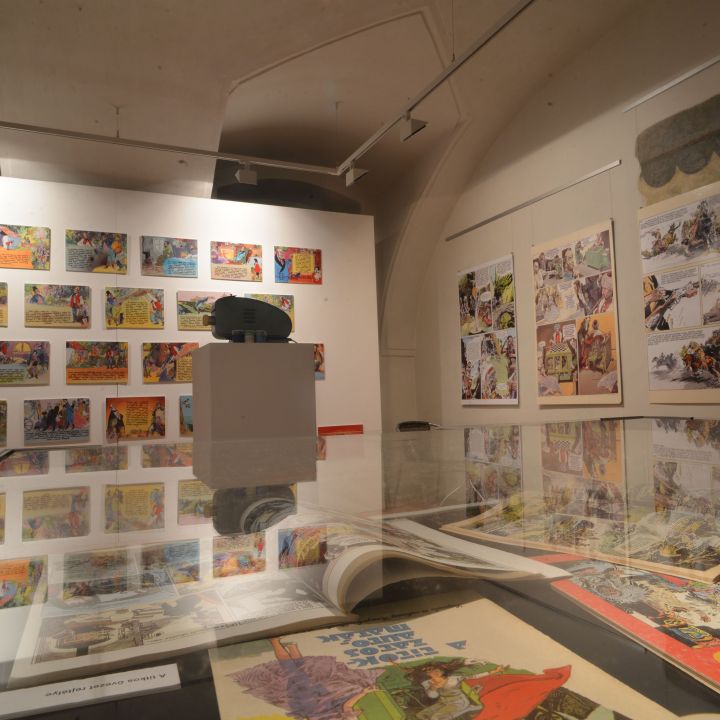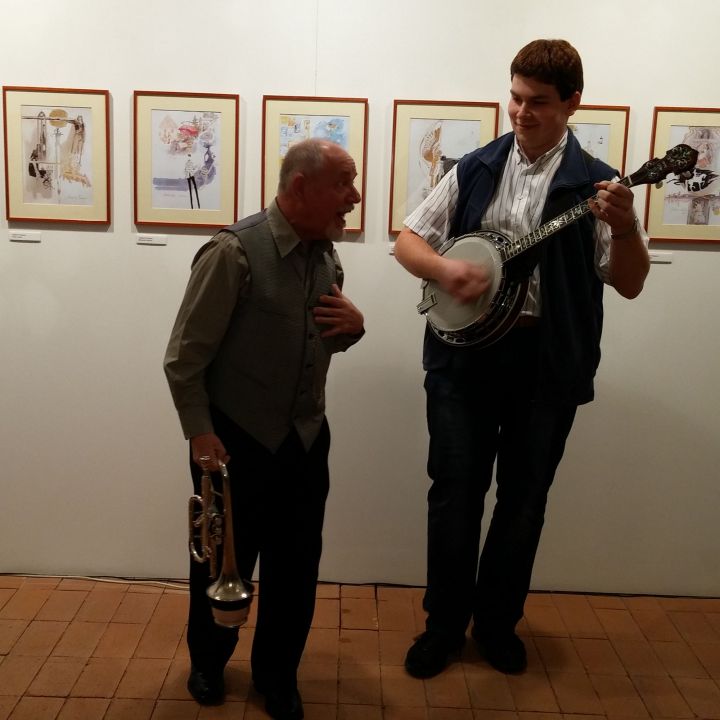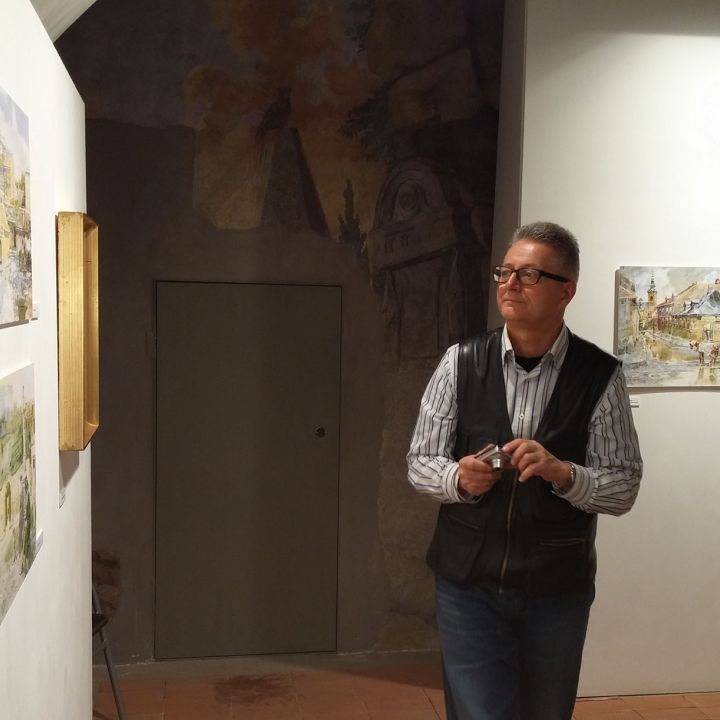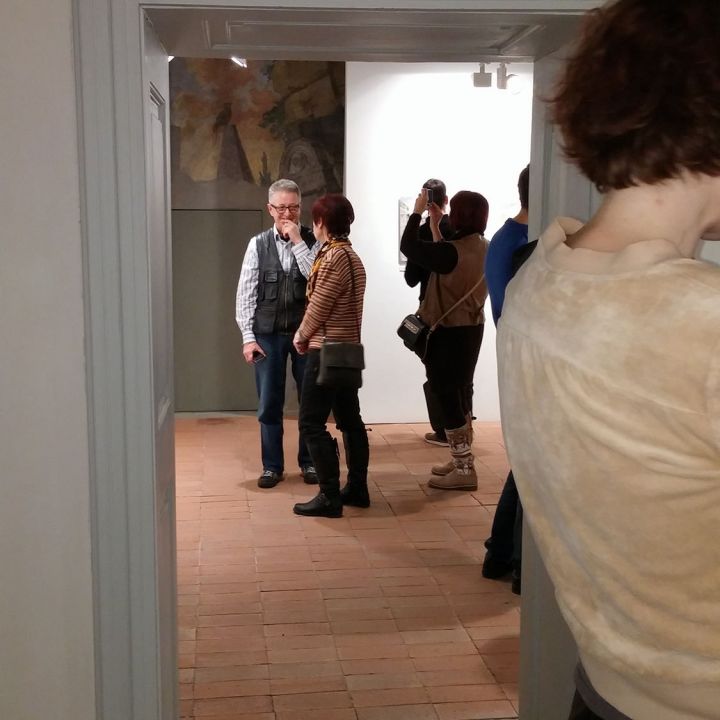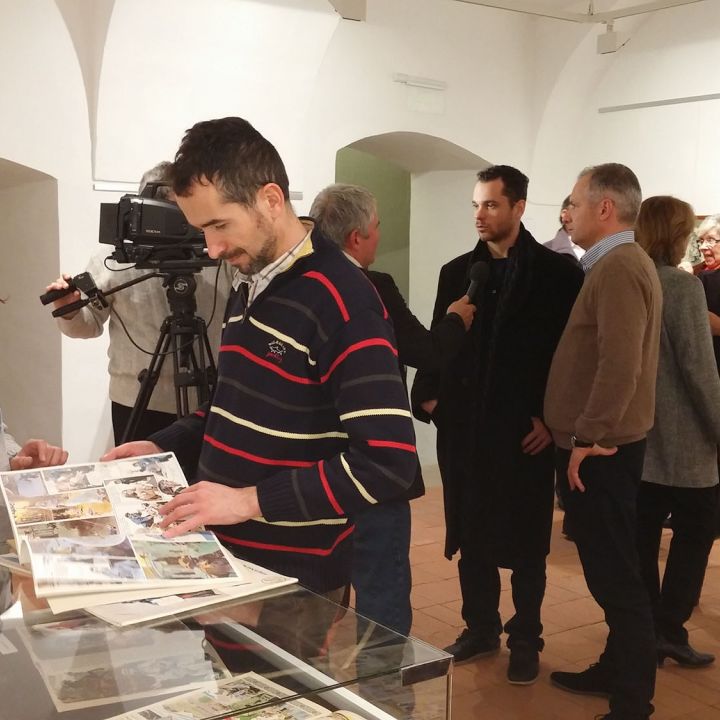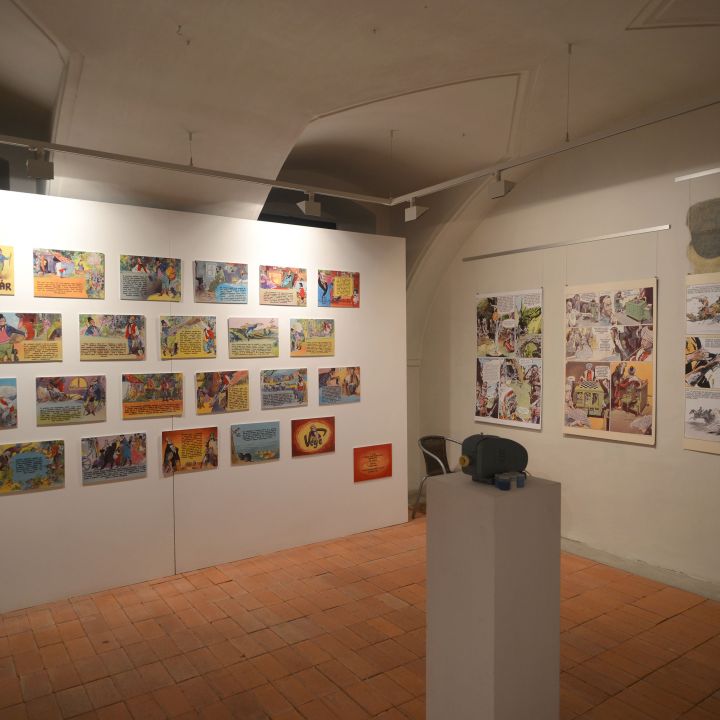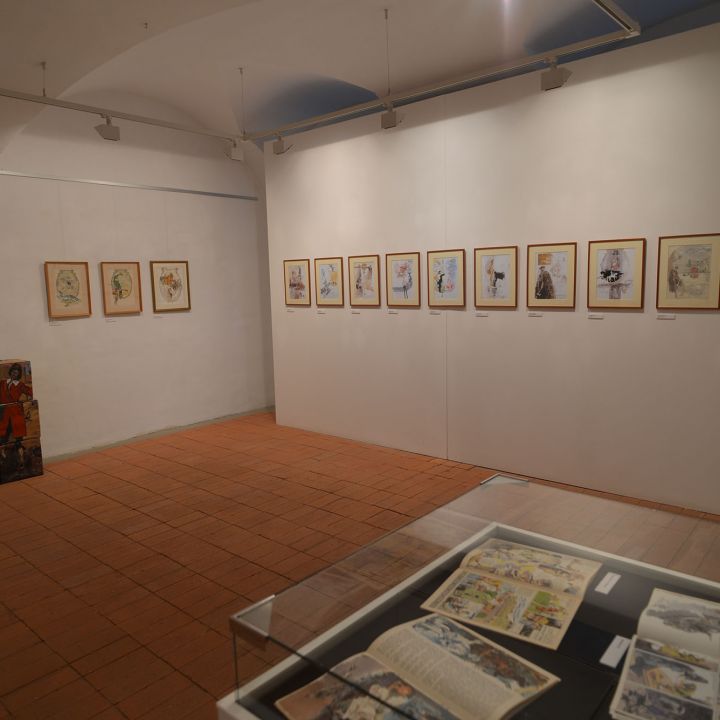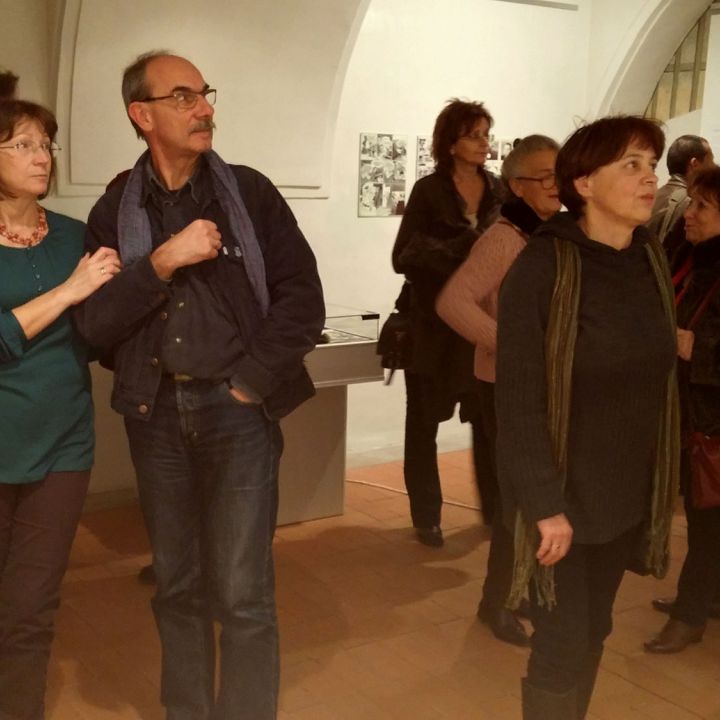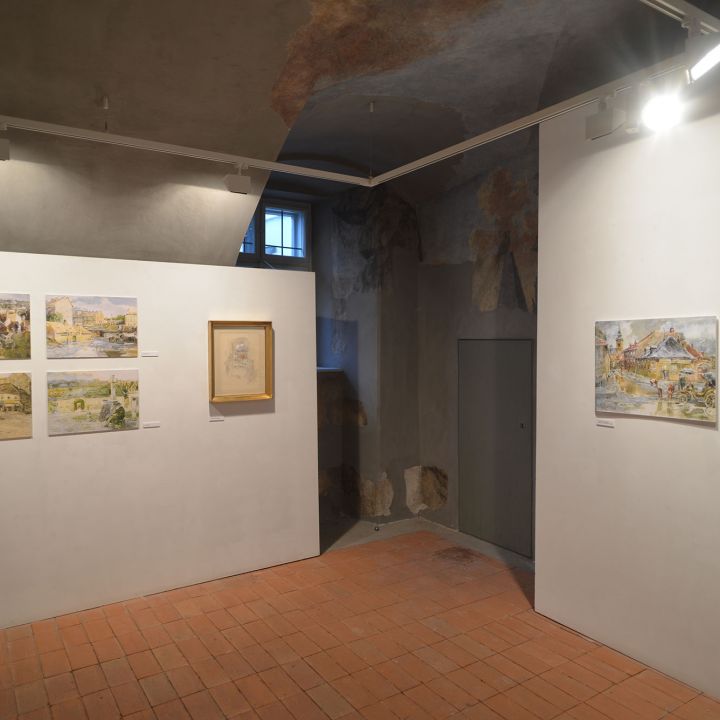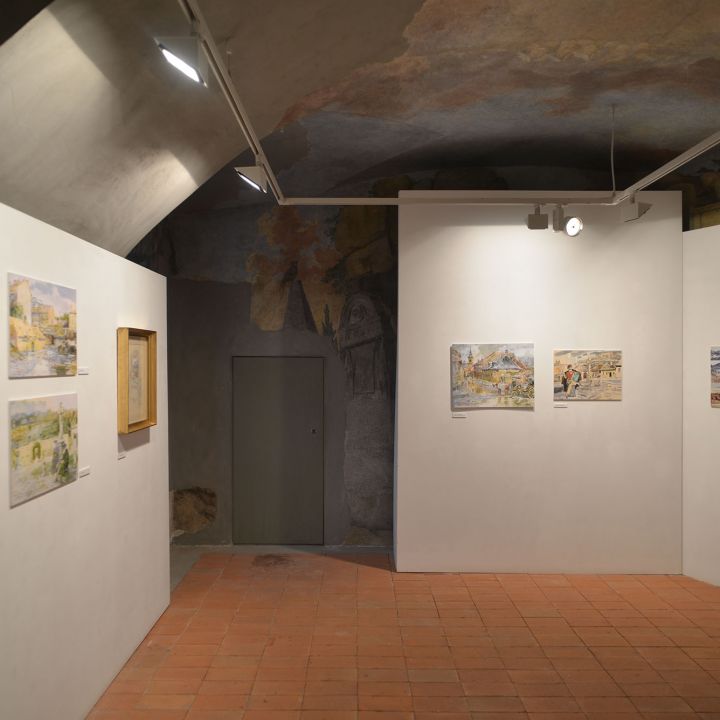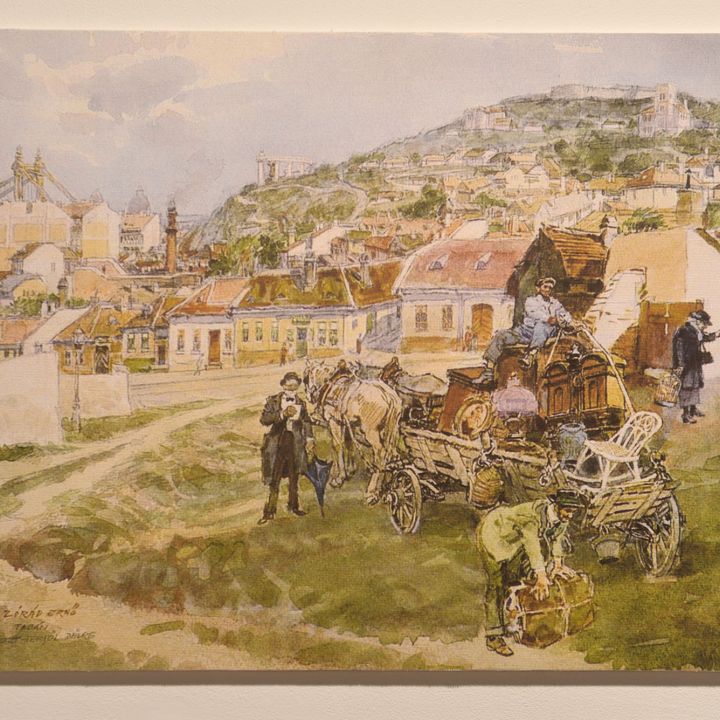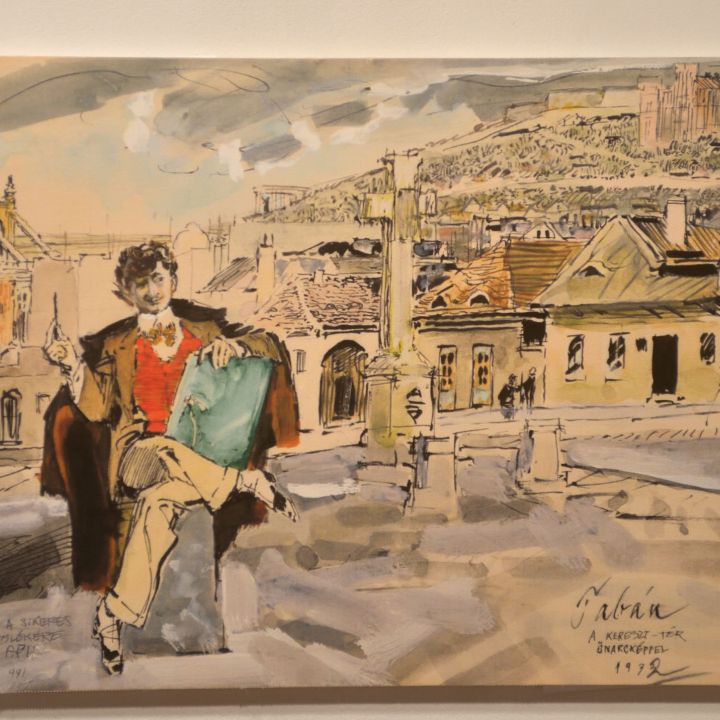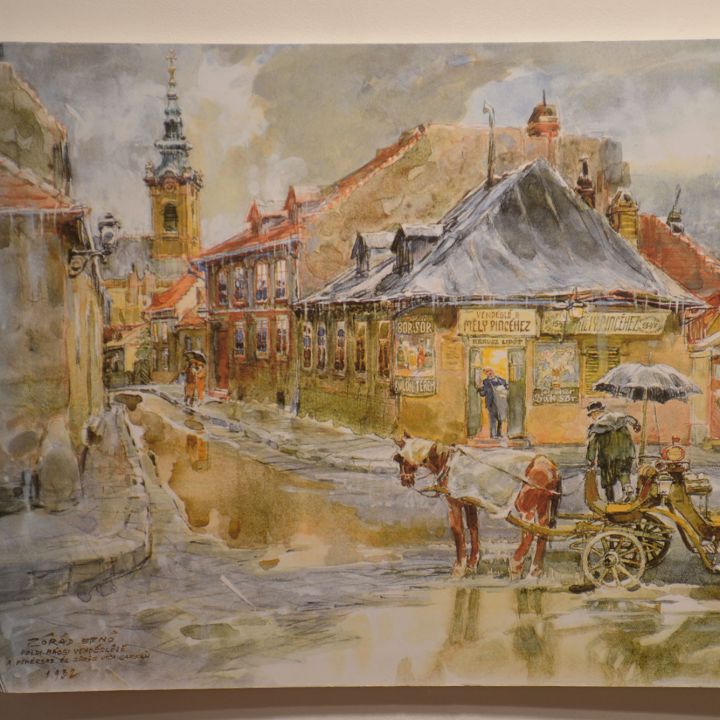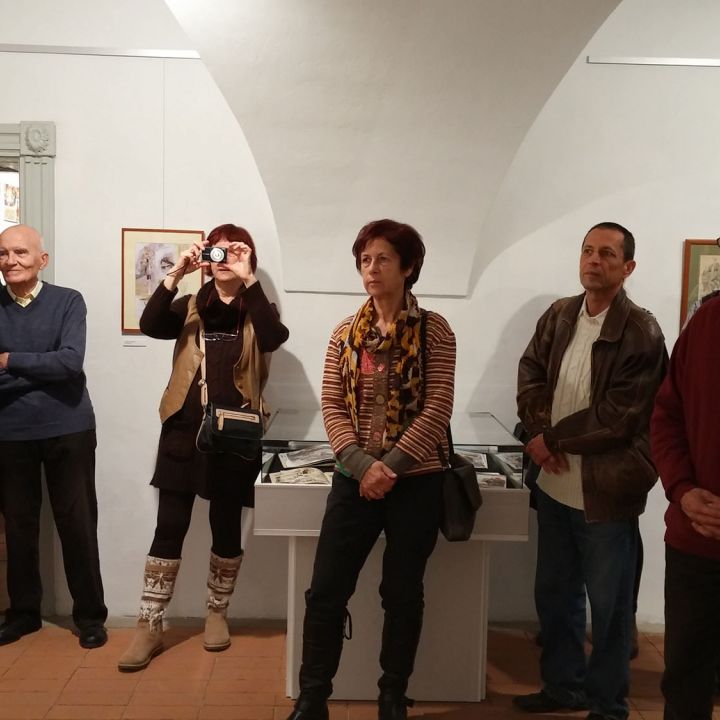"His drawings were characterised by elegance and brilliant draughtsmanship. It takes me a hundred pages to do what he can express in a single line."
Sándor Márai
He was born in 1911 into an impoverished middle-class family in Upper Hungary/Felvidék. In 1918, when Czechoslovakia came into being they had to leave Nitra and moved to Tabán in Budapest. His outstanding talent for drawing was evident at an early age: between 1927 and 1929 he studied at the School of Applied Arts under Jenő Haranghy. His classmates were Miklós Ehrenfeld and Imre Tóth, who later became known as Michel Gyarmathy and Amerigo Tot.
Zórád served in the cavalry artillery in Galicia during the Second World War. After the war he started working in the press, first for the Hungarian Sunday/Magyar Vasárnap led by György Parragi and then for Pest Stuff/Pesti Izé drawing graphics and caricatures. After the closure of these newspapers in 1951 he joined the Youth Newspaper and Book Publishing Company/Ifjúsági Lap- és Könyvkiadó Vállalat, where he initially drew covers for the puzzle magazine Eary/Füles. His first comic strip, Winnetou based on a novel by Karl May was published in 1957. He didn't think much of it (as he said, "all my hatred was seen on it"); its significance lies in the fact that it was the first Hungarian comic book with a word bubble, since before that only stories with captions had been published in Hungary.
In the following decades he drew countless comics (mainly with the help of Tibor Cs. Horváth), which due to the scarce possibilities of the time were almost all adaptations of literary works and were published in black and white sequels of a few pages in various magazines. In the seventies and eighties some of his works were published in full booklets, in large watercolour albums with full-page paintings (he also redrew Winnetou in 1975); these booklets, also mostly literary adaptations and historical comics are now treasured collectors' items.
Zórád first used the collage technique around 1970, which became his trademark: he placed engravings and photographic details between the drawings to create a contemporary atmosphere. His exceptional graphic skills, combined with a wide-ranging education enabled him to draw authentically from bygone eras and to faithfully reproduce historical figures and places down to the smallest detail. He was an artist who did not look down on the genre, but elevated the comic to an artistic level.
Zórád did not only make his mark in comics, from 1952 onwards he made numerous slide films, illustrated magazines and books. Many illustrations were created for his favourite authors, Gyula Krúdy, Kálmán Mikszáth and Zsigmond Móricz. He never turned his back on his original vocation, painting and his watercolours were exhibited several times at home and abroad, first in Budapest in 1947. He was a master of watercolour and its topcoat version, gouache. His most famous and perhaps most beautiful series of paintings depict the bohemian Taban, demolished in the 1930s (painted decades after the demolition of the neighbourhood, from sketches and memories).
His works can be seen in the Municipal Gallery in Balassagyarmat and Ipolyság. Ernő Zórád received the Officer's Cross of the Order of Merit of the Hungarian Republic in 2000 and the Municipality of Budavár awarded him the title of "Honoured Citizen of Budavár". The House of Arts and the Foundation for the Care of Ernő Zórád's Legacy organise an exhibition in the three rooms of the Dubniczay Palace - Castle Gallery, with a comprehensive programme of events, mainly aimed at the needs of visitors to Veszprém.

